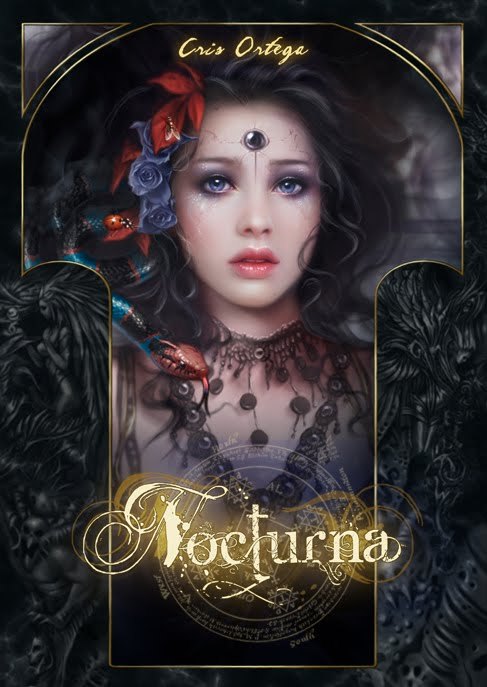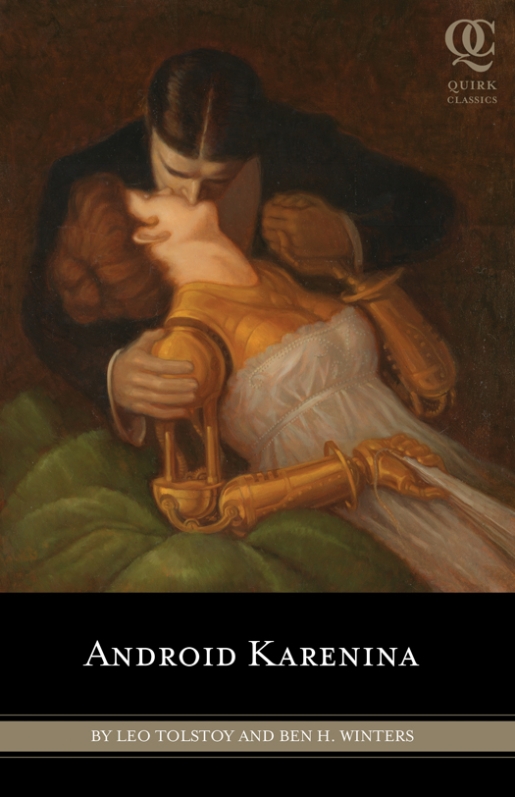Las eternas (The eternal) is the story of Mario Corsini, a young man that works in Venice as a toy maker with Andrea, his brother. Both of them show the two faces of the same coin: Mario is sensible, appeased and always knows what has to be done in every single moment. In the other hand, Andrea likes to live as an actual young man, he loves to party, to flirt with girls, to make some money and spend it, and that's everything he needs to be happy. In spite of that, both of them will change through the novel because of some matter of facts that will make them to. The life of these character seems interrupted when the Montalbanos arrive to the city and set up their toy store in the other side of the river. Mario feels some kind of conection all of a sudden with Silvana Montalbano, the daughter of the widowed toy maker, but she's got something strange inside of her. In this point is where everything begins, when Mario tries to get this conection beyond friendship. Everything mixed with the secret of the mysterious nearly-living dolls of Montalbano and another one about a mysterious body snatcher that gets young girls bodies.
The characters are all of them well made, I mean, they're not (excepting one, but I think she's made to bother everyone) flat characters, they have their own stories that lead them to be as they actually are, and, as the story goes by, you will get to know every one of them (at least the most important of them). In this book there are too many references to the 19th century literature, specially Frankenstein, in spite of being a story full of books and notebooks, because there are body snatching, living creatures, electricity controlled hearts, biological experiments... And because, in one point of this story, you can also know the sadness and solitud of somebody that is one of a kind.
The characters are all of them well made, I mean, they're not (excepting one, but I think she's made to bother everyone) flat characters, they have their own stories that lead them to be as they actually are, and, as the story goes by, you will get to know every one of them (at least the most important of them). In this book there are too many references to the 19th century literature, specially Frankenstein, in spite of being a story full of books and notebooks, because there are body snatching, living creatures, electricity controlled hearts, biological experiments... And because, in one point of this story, you can also know the sadness and solitud of somebody that is one of a kind.
I loved the style of writting of this author (I must recognize I haven't read her first novel Hojas de dedalera [Foxglove leaves]) because, although she gives the idea of having too much information about the place or the story to tell us, she doesn't or, at least, not in excess. But I must also say that this one, I think, is not pretty well mixed, because I can clearly set a cut where there is a story about love and mystery and where there is just a love story withouth anything else. Fortunately it doesn't last too much time and soon it gets again the perfect mixture. About the end (calmd down, I will not spoil anyone) I must recognize I liked it. It's not a happy end, but not it is a sad one. I thinks it's just fair for a story that plays with life and death.
Victoria Álvarez has made a good work mixing some mystery, action, technology, love and a progressive maturity of the characters. Maybe it's not the perfect novel, but I think this author has started a great career as a writter that I hope lasts long because she has some great ideas that deserve to be carried all over the world.
* * * * *
Hoy, gracias a la editorial Versátil, estamos aquí para hablar de Las eternas, la nueva novela de Victoria Álvarez, escritora española que esta vez trata de llevarnos a la Venecia de principios del siglo XX. Ésta puede parecer una simple historia de inspiración steampunk sobre autómatas, pero es más que eso, es una historia de amor, de pasiones, de cómo el tiempo pasa para todo el mundo... Parece una versión moderna del moderno Prometeo, es decir, una revisión del Frankenstein de Mary Shelley.
Las eternas es la historia de Mario Corsini, un joven que trabaja en Venecia como fabricante de juguetes junto a Andrea, su hermano. Ambos muestran las dos caras de una misma moneda: Mario es sensato, calmado y siempre sabe qué debe hacer. Por otro lado, a Andrea le encanta salir, coquetear con las jóvenes y ganar algo de dinero para gastar, es todo lo que necesita para ser feliz. A pesar de ello, los dos irán cambiando a lo largo de la novela a raíz de algunos hechos que les obligarán a ello. La vida de estos personajes se ve interrumpida cuando los Montalbano llegan a la ciudad y disponen su juguetería al otro lado del río. Mario siente algún tipo de conexión inmediata con Silvana Montalbano, la hija del viudo juguetero, pero tiene algo extraño en su interior. Es en este punto cuando todo comienza, cuando Mario intenta llevar esta conexión más allá de la amistad. Todo ello mezclado con el secreto de las misteriosas muñecas casi vivas de Montalbano y una historia sobre un misterioso ladrón de cadáveres que pretende conseguir algunos cuerpos de jóvenes muchachas.
Los personajes están todos bastante bien construidos, quiero decir, no hay (a excepción de uno, aunque creo que está hecho para irritar a todo el mundo) personajes planos, tienen sus propias historias que los llevan a ser como son en realidad, y, según pasa la historia, llegas a conocerlos a cada uno de ellos (al menos a los más relevantes). En este libro encontramos también muchas referencias a la literatura del siglo XIX, especialmente a Frankenstein, además de por ser una historia llena de novelas y cuadernos, por la aparición del robo de cadáveres, criaturas vivientes, corazones controlados por electricidad, experimentos biológicos... Y porque, llegado un punto de la historia, puedes sentir la tristeza y soledad de alguien que es único en su especie.
 Me encanta el estilo de esta autora (tengo que reconocer que no he leído su primera novela Hojas de dedalera) porque, aunque da la idea de tener demasiada información que dar sobre el lugar o la historia que nos cuenta, no lo hace o, al menos, no en exceso. Pero tengo que decir también que esta historia, creo, no está del todo bien mezclada, porque podría establecer claramente un corte en el que aparezca la historia de amor y misterio y otro en el que únicamente hay historia de amor sin más. Afortunadamente, no dura demasiado y pronto vuelve a la mezcla perfecta del principio. Sobre el final (tranquilos, no voy a spoilear a nadie) tengo que reconocer que me gustó. No es un final feliz, pero tampoco uno triste. Creo que es simplemente un final justo para una historia que juega con la vida y la muerte.
Me encanta el estilo de esta autora (tengo que reconocer que no he leído su primera novela Hojas de dedalera) porque, aunque da la idea de tener demasiada información que dar sobre el lugar o la historia que nos cuenta, no lo hace o, al menos, no en exceso. Pero tengo que decir también que esta historia, creo, no está del todo bien mezclada, porque podría establecer claramente un corte en el que aparezca la historia de amor y misterio y otro en el que únicamente hay historia de amor sin más. Afortunadamente, no dura demasiado y pronto vuelve a la mezcla perfecta del principio. Sobre el final (tranquilos, no voy a spoilear a nadie) tengo que reconocer que me gustó. No es un final feliz, pero tampoco uno triste. Creo que es simplemente un final justo para una historia que juega con la vida y la muerte.
 Me encanta el estilo de esta autora (tengo que reconocer que no he leído su primera novela Hojas de dedalera) porque, aunque da la idea de tener demasiada información que dar sobre el lugar o la historia que nos cuenta, no lo hace o, al menos, no en exceso. Pero tengo que decir también que esta historia, creo, no está del todo bien mezclada, porque podría establecer claramente un corte en el que aparezca la historia de amor y misterio y otro en el que únicamente hay historia de amor sin más. Afortunadamente, no dura demasiado y pronto vuelve a la mezcla perfecta del principio. Sobre el final (tranquilos, no voy a spoilear a nadie) tengo que reconocer que me gustó. No es un final feliz, pero tampoco uno triste. Creo que es simplemente un final justo para una historia que juega con la vida y la muerte.
Me encanta el estilo de esta autora (tengo que reconocer que no he leído su primera novela Hojas de dedalera) porque, aunque da la idea de tener demasiada información que dar sobre el lugar o la historia que nos cuenta, no lo hace o, al menos, no en exceso. Pero tengo que decir también que esta historia, creo, no está del todo bien mezclada, porque podría establecer claramente un corte en el que aparezca la historia de amor y misterio y otro en el que únicamente hay historia de amor sin más. Afortunadamente, no dura demasiado y pronto vuelve a la mezcla perfecta del principio. Sobre el final (tranquilos, no voy a spoilear a nadie) tengo que reconocer que me gustó. No es un final feliz, pero tampoco uno triste. Creo que es simplemente un final justo para una historia que juega con la vida y la muerte.
Victoria Álvarez ha hecho un buen trabajo aunando algo de misterio, de acción, de tecnología, de amor y de una progresiva madurez de los personajes. Tal vez no sea la novela perfecta, pero creo que es una autora que ha comenzado una gran carrera como escritora y espero que vaya para largo, porque tiene algunas buenas ideas que merecen ser mostradas por todo el mundo.























